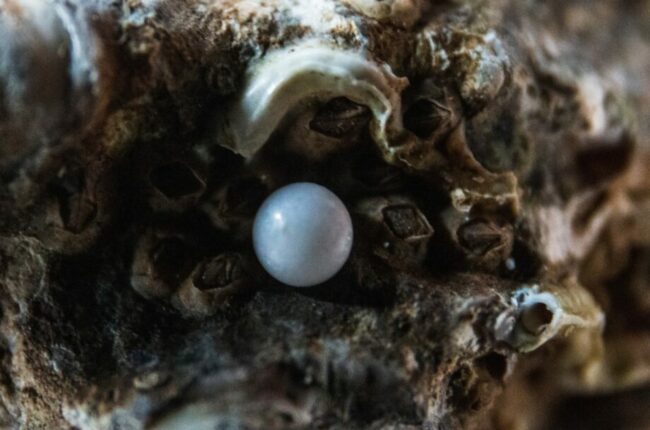What Is the Origin of Pearls?
Pearls hold a unique place in the world of gemstones because they originate from living creatures. When we speak of pearls, we often think of oysters, but mussels and some species of clams also produce them. These mollusks create pearls as a defense mechanism against irritants that enter their shells.
Table Of Contents
−- What Is the Origin of Pearls?
- Is it true that all oysters contain pearls?
- Is it possible to find a pearl in an oyster?
- How Are Pearls Created?
- How Do Pearls Get Harvested?
- What is the maximum number of pearls that one oyster can have?
- Are pearls living or dead?
- How Long Does It Take to Form a Cultured Pearl?
- What Is the Value of Pearls?
- What kinds of pearls are there?
- What Is the Difference Between Cultured and Natural Pearls?
- Conclusion
When it comes to freshwater pearls, the majority available in the market hail from China’s freshwater rivers and lakes. Meanwhile, saltwater pearls can be found in various oceanic regions, including the coasts of Japan (famous for Akoya pearls), French Polynesia (known for Tahitian pearls), and Australia (known for South Sea pearls). Each of these pearl types has unique characteristics, setting them apart in appearance, quality, and market value.

Is it true that all oysters contain pearls?
Although many oysters, clams, and mussels have the capability to produce pearls, not all do. The formation of a pearl is usually a natural defense mechanism to an irritant, like a grain of sand or a parasite. But not every mollusk that encounters an irritant will produce a pearl.
Furthermore, pearls can vary in quality and size even within mollusks that do produce them. Larger oysters tend to have a higher chance because they’ve lived longer and faced more irritants.
Is it possible to find a pearl in an oyster?
While it’s a romantic notion to think of finding a precious pearl inside every oyster on your dinner plate, the reality is less promising. Natural pearls are exceedingly rare. The 1 in 10,000 statistic is a testament to the patience and luck required to find these natural gems.
How Are Pearls Created?
Whether naturally formed or cultured, the process involves an irritant getting trapped inside the mollusk. In response, the mollusk secretes a substance called nacre, which coats the irritant. Over time, as layers of nacre are added, a pearl forms.
Cultured pearls expedite this process. Instead of waiting for an irritant to accidentally get trapped, pearl farmers intentionally insert a small bead or piece of mantle tissue into the mollusk to initiate the pearl-forming process. This ensures a more predictable and consistent pearl harvest.
How Do Pearls Get Harvested?
Once the pearl reaches its desired size, the oyster or mussel is harvested. It’s a delicate process. The shell is gently pried open, and the pearl is removed. If the mollusk is still healthy, it can sometimes be implanted again to produce another pearl. The health of the mollusk is crucial for pearl farmers, so care is taken to ensure their wellbeing.
What is the maximum number of pearls that one oyster can have?
While some oysters can produce multiple pearls at once, it’s uncommon. Typically, an oyster produces one pearl at a time. Cultured freshwater mussels, on the other hand, can be grafted multiple times, producing several pearls simultaneously.
Are pearls living or dead?
While pearls themselves are not alive, they are produced by living creatures. Over time, pearls can lose their luster if not cared for, but with proper maintenance, they can retain their beauty for generations.
How Long Does It Take to Form a Cultured Pearl?
The time it takes varies based on the type of pearl and the conditions in which the mollusk lives. While Akoya pearls might be harvested after a year, South Sea or Tahitian pearls can take up to 2-4 years to reach their full size.
The environment, including water temperature and cleanliness, plays a huge role in how quickly the nacre layers are deposited.
What Is the Value of Pearls?
The value of pearls is determined by a combination of their size, shape, color, luster, surface quality, and nacre quality. Other factors like rarity, whether it’s natural or cultured, and its type (e.g., Akoya, South Sea, Tahitian, Freshwater) also play a role.
What kinds of pearls are there?
Beyond freshwater and saltwater pearls, there are various classifications based on where and how they are produced. Natural pearls are incredibly rare and formed without human intervention. Cultured pearls are more common and are formed with a little help from pearl farmers.
What Is the Difference Between Cultured and Natural Pearls?
The primary difference lies in how the pearl formation is initiated. In natural pearls, the process starts accidentally when an irritant gets trapped. In cultured pearls, the process begins intentionally by inserting an irritant.
Conclusion
Pearls, with their radiant beauty, have been cherished for millennia. Their formation is a testament to nature’s ability to turn irritants into treasures. Whether found in the wild or cultivated by humans, each pearl carries with it a story of a journey from a simple grain of sand to a symbol of elegance and sophistication.

Editorial Staff
Our writers, editors, content managers, and SEO specialist. We all take part in crafting amazing articles. We spend hours ensuring that each article is based on facts, researched, and thorough. You'll never want to click the back button to look for more answers other than here!
